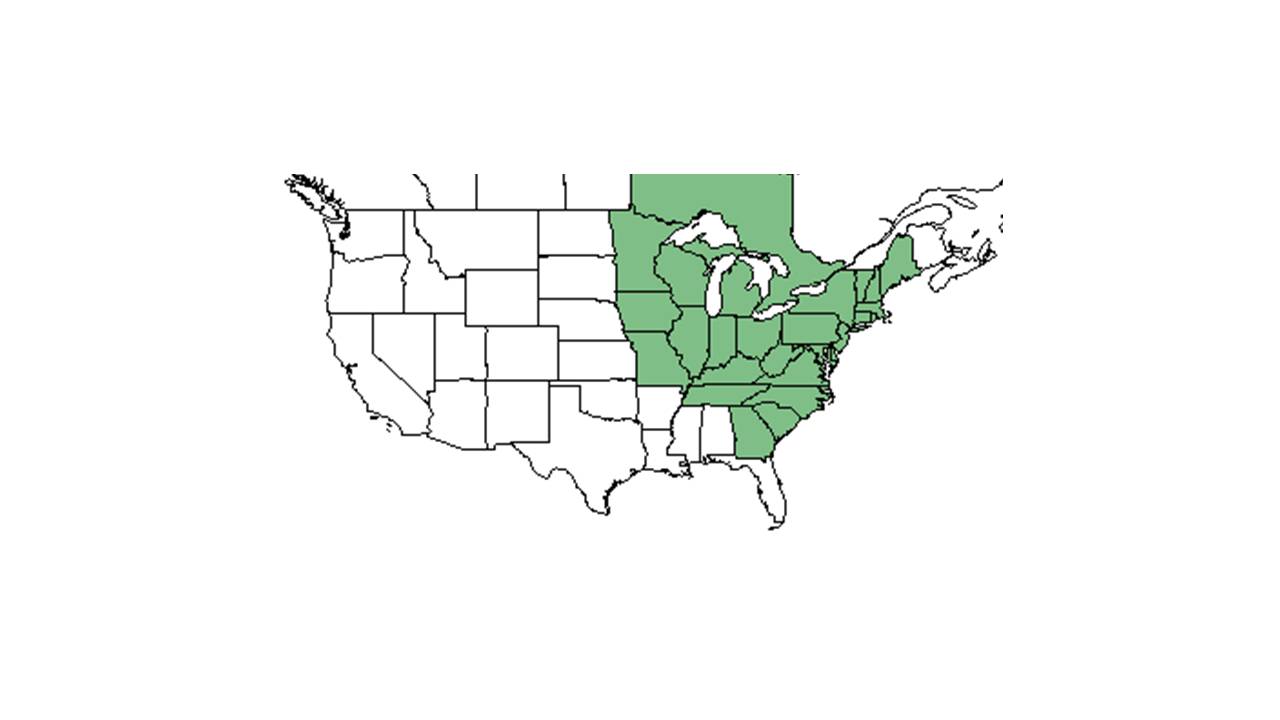Difference between revisions of "Aureolaria pedicularia"
KatieMccoy (talk | contribs) |
KatieMccoy (talk | contribs) (→Seed bank and germination) |
||
| Line 36: | Line 36: | ||
===Seed bank and germination=== | ===Seed bank and germination=== | ||
| − | The germination of ''A. pedicularia'' is epigeal, with the | + | The germination of ''A. pedicularia'' is epigeal, with the radicle having a strong geotropic response (Musselman et al. 1969). The radicles are covered with root hairs however, seedlings do not have root hairs, this phenomenon could be the result of vestigial characteristics (Musselman et al. 1969). Germination does not depend on light (Musselman et al. 1969). |
===Fire ecology=== <!--Fire tolerance, fire dependence, adaptive fire responses--> | ===Fire ecology=== <!--Fire tolerance, fire dependence, adaptive fire responses--> | ||
Revision as of 17:12, 1 December 2015
| Aureolaria pedicularia | |
|---|---|

| |
| Scientific classification | |
| Kingdom: | Plantae |
| Division: | Magnoliophyta - Flowering plants |
| Class: | Magnoliopsida - Dicotyledons |
| Order: | Lamiales |
| Family: | Orobanchaceae |
| Genus: | Aureolaria |
| Species: | A. pedicularia |
| Binomial name | |
| Aureolaria pedicularia ((L.) Raf. | |

| |
| Natural range of Aureolaria pedicularia from USDA NRCS Plants Database. | |
Common Name: Fernleaf Yellow False Foxglove
Contents
Taxonomic notes
Synonyms: Agalinis pedicularia, Dasistoma pedicularia, Gerardia pedicularia
Description
In its northern range, A. pedicularia is a biennial plant that forms a basal rosette of leaves in late summer and bolts the following spring, while in the southern range, it is an annual (Musselman and Man 1978; Musselman et al. 1969). The stem is terete and covered with glandular hairs [1]. The leaves are fernlike, opposite and sessil [2] [1].
Distribution
Ecology
Habitat
A. pedicularia can occur in slash pinelands, oak-hickory forests, and oak-pine forests (FSU Herbarium; Stiles 1977; Werth et al. 1979). Large populations have been observed on road banks, powerline corridors and other disturbed areas. The inclination for disturbed areas and prolific seed production allows a strong potential as a forest plantation pathogen (Musselman and Mann 1978). Associated species include Pinus rigida, Castanea pumila, Pinus palustris and species of Quercus (Werth and Riopel 1979).
It is a hemiparasitic plant, with a strong affinity for oaks (Musselman and Grelen 1979). Musselman et al. (1969) suggested that A. pedicularia was specific to oak species, however studies have shown populations growing without oaks hosts (Musselman and Grelen 1979; Werth and Riopel 1979). Werth and Riopel (1979) suggest that it does not exhibit a promiscuous parasitism characteristic, but a selectivity for fagaceous roots.
Phenology
Blooms August through September with yellow, zygomorphic campanulate flowers that last one day (Stiles 1977).
Seed bank and germination
The germination of A. pedicularia is epigeal, with the radicle having a strong geotropic response (Musselman et al. 1969). The radicles are covered with root hairs however, seedlings do not have root hairs, this phenomenon could be the result of vestigial characteristics (Musselman et al. 1969). Germination does not depend on light (Musselman et al. 1969).
Fire ecology
It thrives well in fire prone communities and needs periodic fire [3]. Large stands of A. pedicularia have been observed in an oak-pine forest that is burned every third year (Stiles 1977).
Pollination
Three types of bumblebees are responsible for pollination: Bombus impatiens, B. vagans and B. affinis. B. affinis is a nectar robber, cutting holes in the base of the corolla tubes to obtain nectar (Stiles 1977).
Use by animals
Larva of the Orange Sallow moth (Pyrrhia aurantiago) feed on the flower, developing seeds and foliage in early October[4].
Photo Gallery
References and notes
Canne, Judith M.. Seed Surface Features in Aureolaria, Brachystigma, Tomanthera, and Certain South American Agalinis (scrophulariaceae). Systematic Botany 5.3 (1980): 241–252
Florida State University Robert K. Godfrey Herbarium database. URL: http://herbarium.bio.fsu.edu. Last accessed: October 2015. Collectors: Robert K. Godfrey. States and Counties: Florida: Wakulla. Compiled by Tall Timbers Research Station and Land Conservancy.
Leicht-Young, S. A., N. B. Pavlovic, et al. (2009). "A comparison of seed banks across a sand dune successional gradient at Lake Michigan dunes (Indiana, USA)." Plant Ecology 202: 299-308.
Musselman, L. J. (1969). "Observations on the life history of Aureolaria grandiflora and Aureolaria pedicularia (Scrophulariaceae)." American Midland Naturalist 82: 307-311.
Musselman, L. J. and H. E. Grelen (1979). "POPULATION OF AUREOLARIA-PEDICULARIA (L) RAF (SCROPHULARIACEAE) WITHOUT OAKS." American Midland Naturalist 102(1): 175-177.
Musselman, L. J. and W. F. Mann, Jr (1978). Root parasites of southern forests. , USDA Forest Service, Southern For. Exp. Station, New Orleans, LA. Gen. Tech. Rpt. SO-20. : 76.
Stiles, Edmund W.. Foraging Behavior of Bumblebees on False Foxglove. Journal of the New York Entomological Society 85.4 (1977): 249–252.
Werth, Charles R., and James L. Riopel. A Study of the Host Range of Aureolaria Pedicularia (L.) Raf. (Scrophulariaceae). American Midland Naturalist 102.2 (1979): 300–306.
- ↑ 1.0 1.1 [Illinois Wildflowers]Accessed: November 30, 2015
- ↑ [Minnesota Department of Natural Resources] Accessed: November 30, 2015
- ↑ [Rare Plants of New Hampshire] Accessed December 1, 2015
- ↑ [Natural Heritage and Endangered Species Program]Accessed December 1, 2015